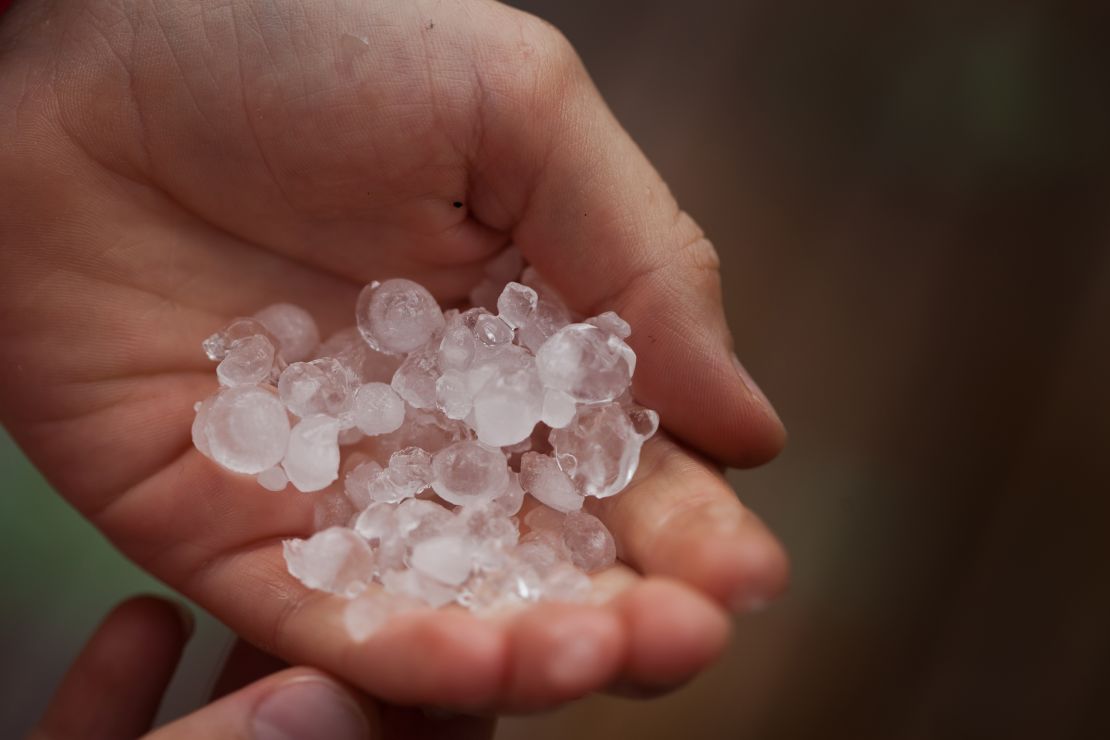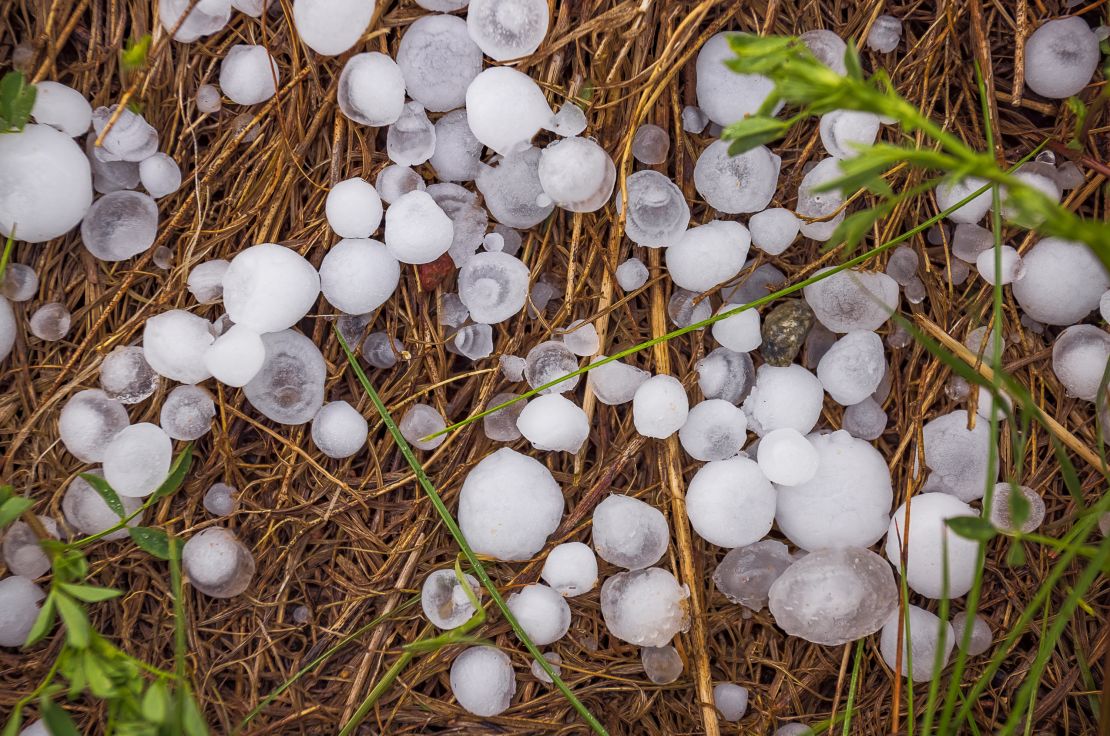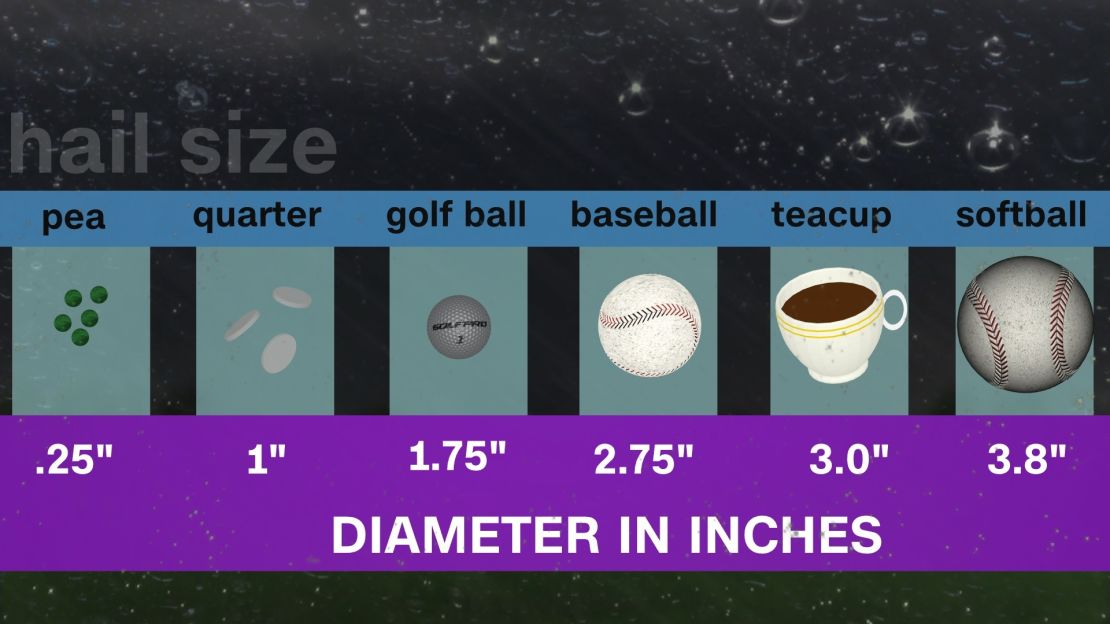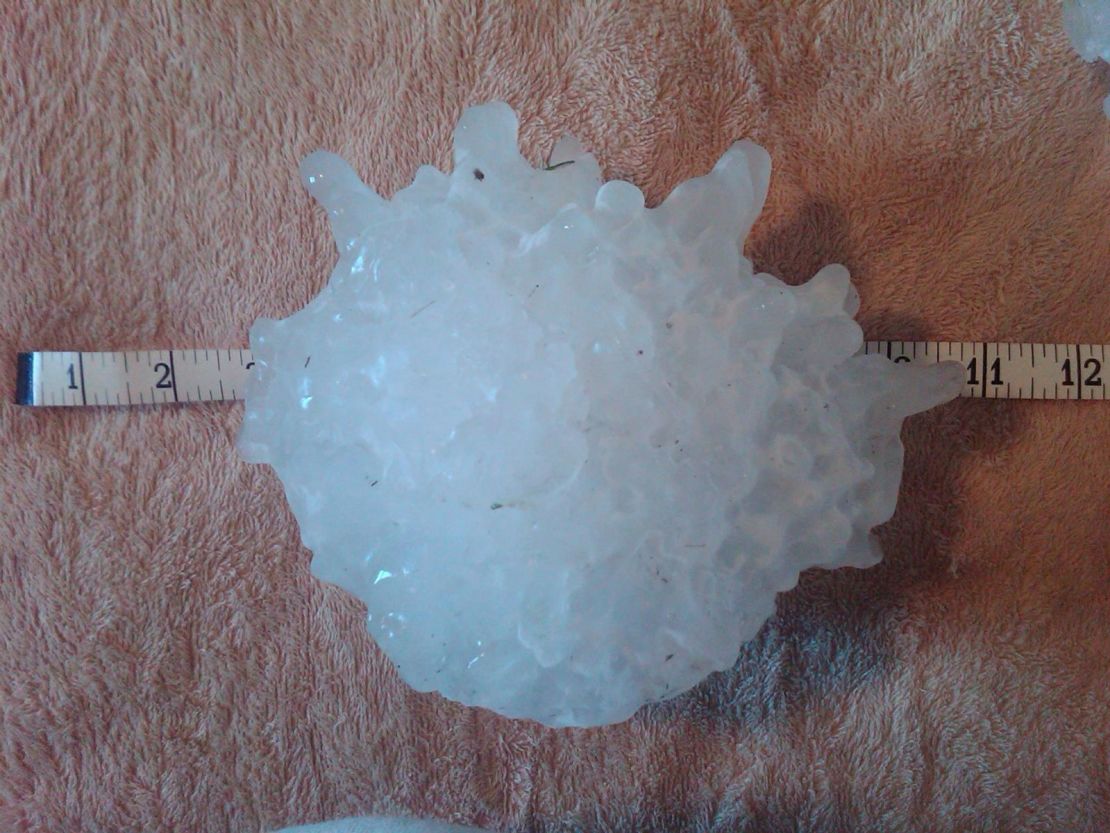Thunderstorms can bring dangerous lightning, heavy rain, strong winds and sometimes ice stones falling from the sky – known, of course, as hail.
Hail generally ranges from pea- to softball-sized and can damage property and injure people.
Hail forms when warming at the Earth’s surface causes water to evaporate and rise, eventually reaching freezing temperatures higher in the atmosphere.
Hail formation can be broken into two types: wet growth or dry growth, according to the National Weather Service. Here’s what they are:
Wet growth
During wet growth, evaporated droplets just above the freezing line in the atmosphere form tiny pieces of ice, which then collide with “supercooled” water droplets surrounded by freezing – but not fully frozen – air.
The new formations then fall and freeze together relatively slowly, which can give hail interesting shapes depending on how the pieces combine.
Since freezing isn’t immediate during wet growth, air bubbles can escape, which makes these hailstones partially clear.

Dry growth
Dry growth happens when temperatures are far enough below freezing that the water droplets freeze immediately when they collide with the small piece of ice that becomes the center of the hailstone, also called a hailstone nucleus.
Since the stone forms from immediate freezing, air bubbles remain and it appears cloudy.

How hail gets much, much bigger
Hail is measured by its diameter and most often referred to by common items close to its size.

Hail can only get bigger if there is an updraft in a thunderstorm that suspends it long enough for more freezing to occur.
If a hailstone is blown away from the updraft, it falls to the ground.
But if it’s picked up by rising air within the thunderstorm and thrown back into the atmosphere above the freezing line, it refreezes and grows more – potentially producing large hail, especially if the cycle repeats again and again.

Then when the hail gets too heavy, it falls to the surface, damaging cars, homes and posing a danger to anyone outdoors.
Hailstones that get to be about 4 inches in diameter will fall to the ground at speeds over 100 mph, according to the National Oceanic and Atmospheric Administration.

The largest hailstone ever recorded fell in 2010 in Vivian, South Dakota, and was 8 inches in diameter – about the size of a bowling ball – according to the National Severe Storms Laboratory.




